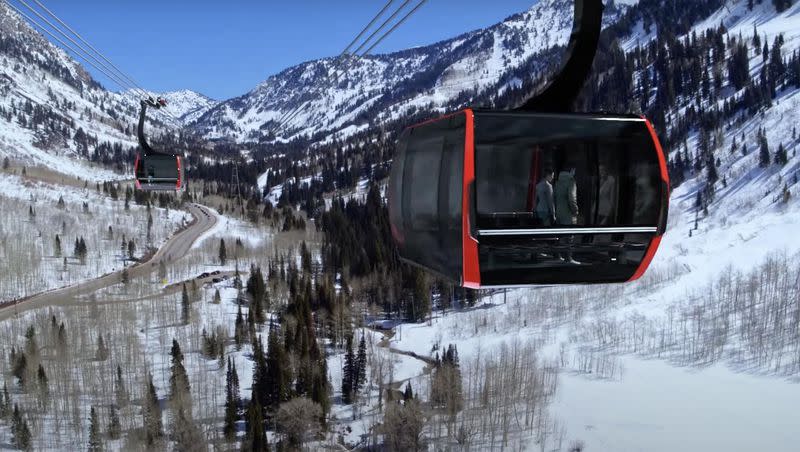Would a gondola have helped during this winter’s avalanche control, interlodge closures?

Avalanche mitigation kept Snowbird and Alta guests and employees stuck up the canyon for five days last week under interlodge orders and the closure of state Route 210. The road is once again closed with no estimated reopening as melting snow increases the risk of natural wet avalanches.
All these restrictions have sparked a debate over whether or not the proposed gondola up Little Cottonwood Canyon would present a solution to problems like this.
Related
The short answer from the Utah Department of Transportation is that the gondola could help when the road is closed but ski resorts are open, but that it would not run during any active artillery avalanche mitigation, according to project manager Josh Van Jura.
This means that for much of last week, people would still have been stranded at the resorts. This week, however, when the mountains are safe but the roads are not, it would likely have been up and running.
“So in conditions like this, where it’s not interlodged, but they are worried about natural avalanches, this is a situation today where the gondola would have allowed mobility into and out of the canyon,” Van Jura said Monday. He also said the gondola would be designed to stay above any natural avalanche powder clouds.
Related
Snowbird general manager Dave Fields even suggested that between live artillery missions, the gondola might have been able to run last week, pointing out the dangers of being stuck in the mountains.
“It’s critical that people be able to get in and out of this canyon, whether it’s to work or for medical or for supplies,” he said, specifically calling attention to a 72-year-old man who had a heart attack during the interlodge restrictions and had to be brought down the canyon in a helicopter.
Carl Fisher, executive director of Save Our Canyons, expressed skepticism at the idea that safety is a motivating factor for building the gondola.
“It seems to me, if we’re really concerned about safety, we would be closing these canyons during the events rather than allowing people to get up there and get trapped for potentially days on end,” Fisher said.
Related
There were 27 operations when artillery was used for avalanche mitigation in Little Cottonwood Canyon this year, during which the gondola would not have been operational.
In terms of how much avalanche risk there’s been, this winter has certainly been unique. Utah Department of Transportation spokesperson John Gleason said there’s been more than 30 Little Cottonwood Canyon closures this season, compared to the usual average of 11 closures.
While Van Jura sees this as another reason why gondola riders wouldn’t have to worry so much about safety, Fisher sees it as an additional strike against the gondola.
“This season is a statistical outlier, and usually, we don’t spend billions of dollars on statistical outliers,” Fisher said.
Alta Mayor Roger Bourke said the low likelihood of winters as intense as this one shows that building the gondola would require “spending taxpayers’ money” on “an insurance against rare events that are not necessarily catastrophic, but are certainly inconvenient.”
Ultimately, when the safety of travel up Little Cottonwood Canyon is in question, Van Jura said whether or not the gondola runs would be decided on a “day-by-day basis.”
Related

